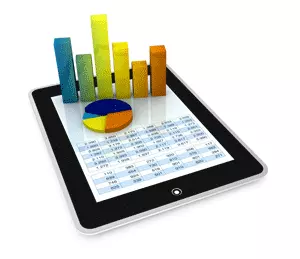July 2011
To see how these concepts played out in our project for this client, please visit Delivering Meaningful Information to Executives.

Most of our projects have consistent interim deliverables – a progress report on a system implementation, a prototype of a new system, and findings uncovered to date. Clients can see results as projects progress.
One type of project, however, is quite different – a business intelligence project, typically consisting of a data warehouse, an Online Analytical Processing (OLAP) cube, and one or more reporting components such as an executive dashboard. It's hard for a client to see results until the entire data warehouse has been built and some significant percentage of the total data has been loaded. While we develop a project plan and report our progress against it, there is so much technical work going on "behind the scenes" that completed tasks have virtually no meaning to clients – they have little basis for comparing tasks against progress on the overall project.
Is 99% Conformance Good Enough?
To make matters worse, all the data coming into the data warehouse must conform to the business rules defined in the loading routines. It is not enough to have  99% conformance to specifications – any data not successfully loaded will inevitably result in report inconsistencies. Furthermore, the 1% non-conforming data is typically discovered near the end of the project, as loading exceptions are researched. The frequent outcome of such research? Someone says, "Oh, yes, I remember now – the West Region changed how they entered that information about four years ago to conform with the East and Central Regions. Might that be our problem?" Yes, it likely is. Those three oldest years of data will remain in the holding queue until the data consistency issues have been resolved. The end result – users will have seven years of clean, vetted, comparable data across all regions, enabling accurate analysis and reporting.
99% conformance to specifications – any data not successfully loaded will inevitably result in report inconsistencies. Furthermore, the 1% non-conforming data is typically discovered near the end of the project, as loading exceptions are researched. The frequent outcome of such research? Someone says, "Oh, yes, I remember now – the West Region changed how they entered that information about four years ago to conform with the East and Central Regions. Might that be our problem?" Yes, it likely is. Those three oldest years of data will remain in the holding queue until the data consistency issues have been resolved. The end result – users will have seven years of clean, vetted, comparable data across all regions, enabling accurate analysis and reporting.
Getting from 99% to 100% data accuracy is often time-consuming and frustrating. While reports and flashier presentations such as an "executive dashboard" can provide some value until the underlying data is complete and accurate, any interim release always carries several caveats with it.
The data warehouse by itself is typically not the end of a business intelligence project – the warehouse's content must be made available in some way. Busy executives focusing on strategic and major operational issues don't have time to learn the lower-level tools, such as spreadsheet add-in modules, for obtaining warehoused data. Such persons need to have a tool much more easily understood and used, yet a tool flexible enough to answer questions guiding major revenue and expense decisions.
Benefits of an Executive Dashboard
Such a tool is an executive dashboard, software that allows creation of graphs, trend lines, and summarized reports for key performance indicators (KPI) and other business metrics. To ensure executives have a good experience with a dashboard, it must have very fast performance – calculations done at the dashboard level must produce results quickly. How is this done? The dashboard draws from common summaries pre-aggregated by, and stored in, the OLAP cube, which also stores any computation-intensive calculated results.
The implication of the preceding discussion is this – the metrics, calculations, and presentations desired in the final visual deliverable, the executive dashboard, must be designed from the get-go in those prerequisite invisible deliverables, the data warehouse and OLAP cube.
This month's e-newsletter describes the executive dashboard we developed for a client, as the capstone of the overall business intelligence project. Just as only about 10% of an iceberg is visible, with the bulk of its great volume underwater, so an executive dashboard is the tip showing above the base – the data warehouse and OLAP cube – for the overall business intelligence project. The executive dashboard is easy to develop, once the base can provide it the desired pre-aggregated data and pre-stored calculation results.
![]()
Todd L. Herman
Read more about getting an Executive Dashboard for your business.





